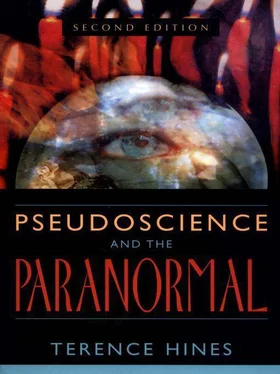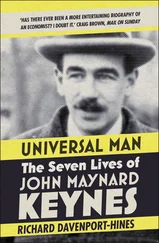Does the critical literature on mediums and spiritualism contain an explanation for every single apparently wondrous phenomenon reported by sitters at the thousands of seances held over the years? Of course not. Many reports, such as medium D. H. Home’s levitation (Brandon 1983, pp. 71–73), the dewy flowers reported by Wallace, and the results of Hare’s (1855) experiments, remain to my knowledge without specific explanations. Should the lack of such explanations convince anyone that spiritualistic phenomena and claims are valid? Certainly not. The burden of proof must rest on the so-called psychic, and not on the skeptic. This conclusion is strengthened by the fact that, when rigorous experimental conditions were imposed on mediums that truly excluded cheating, no spiritualistic phenomena were seen (Houdini 1924; Brandon 1983).
What of the scientists such as Hare and Wallace, who were convinced by what they saw at seances? Were they incompetent scientists, dupes, or just plain gullible? The answer is none of the above. They had simply ventured out of their own area of expertise—an often fatal mistake. They assumed, as did their critics in the scientific community, that if one is a good observer in the laboratory, one is also qualified to observe in the seance. This is simply not true. Mediums were known to cheat, using the magicians’ tricks of sleight of hand and distraction. Magic is a skilled trade requiring years of experience and practice. The training of a chemist, physicist, or psychologist confers no ability to spot magicians’ tricks To detect such cheating requires a magician. This is one of the most important requirements in research into paranormal claims. In the investigation of any type of psychic, only a magician can spot the tricks that mediums and other pyschics so often use. This is, of course, why Houdini was so successful in exposing mediums. He was a magician and knew exactly what to look for. In addition, a magician will be of immense help in any psychic investigation in designing procedures to eliminate trickery and sleight of hand.
The repeated revelations of fraud and trickery on the part of even the most famous mediums had surprisingly little immediate effect on believers in spiritualism. One common response, which presaged the responses of believers in psychic phenomena to similar revelations in the 1970s, was to admit that a particular medium did cheat sometimes, but that at other times the phenomena were real. This argument, of course, was an attempt to shift the burden of proof back to the skeptic by requiring that the skeptic explain away every single allegedly miraculous event before a medium, or spiritualism in general, would be considered discredited.
In the 1980s a new, simpler, form of mediumship became quite popular. Known as channeling, it dispenses with the sleight of hand and other gimmickery associated with classical mediumship. There are no floating, disembodied apparitions and no apported objects in channeling. The medium simply sits and allows some entity to speak through him or her, becoming a channel for the entity’s communication. Depending on the channel, the entity may be from the past, the future, another planet or even another dimension. Mrs. J. Z. Knight, a California channel highly thought of by Shirley MacLaine, channels Ramtha, who conquered the world thirty-five thousand years ago. Ramtha was born on Atlantis. Mrs. Knight certainly doesn’t channel for free. A session of listening to Ramtha costs $400. The fee is $1,500 for a two-day seminar (Gardner 1987a). What sort of wisdom do the channels impart? It consists largely of New Age platitudes about getting in touch with yourself, loving yourself, and the lack of reality of reality.
Repeated exposes of fraud had a cumulative effect over the years, and spiritualism was largely discredited by the 1920s. Classic mediumistic spiritualism is, however, still with us, although it now has a much smaller following. Proponents support a number of spiritualist “camps” such as Camp Chesterfield in Chesterfield, Indiana, and Camp Silver Belle in Ephrata, Pennsylvania. The term “camp” here is somewhat misleading—a better term would be “resort,” as the camps have all the amenities of a resort. Just as youngsters might go to a tennis camp to improve their tennis game or to a computer camp to learn how to program computers, thousands of elderly people go to spiritualist camps to communicate with their dead relatives and friends. M. Lamar Keene was for years a leading medium at Camp Chesterfield. He revealed the inner workings of modern spiritualism in his 1976/1997 book (coauthored with Allen Spraggett), The Psychic Mafia.
Spiritualism has become big business, raking in millions of dollars annually from the lonely, the elderly, and the bereaved who believe that they are being put in touch with the spirits of their loved ones. As Keene (1976) makes clear, spiritualism is a lucrative racket. He reports that he and his partner took in between $10,000 and $20,000 “in one night of services” (p. 65) at their small spiritualist church in Tampa, Florida. Another time, “I collected one Sunday $15,000 in contributions, most of them cash, for our building fund” (p. 71). Of course, there never was any plan to build anything with the money—other than Keene’s personal bank account. Keene states that “one woman, who wasn’t particularly well-off, gave more than $40,000 to the church—to my partner and me—during the four years or so she attended” (p. 69). Sitters would leave money to Camp Chesterfield in their wills, one man leaving $100,000 and another estate more than $500,000.
Keene (1976/1997) reveals in detail the tricks of the medium’s trade, several of which are worth repeating here. One of Keene’s specialties was apporting lost objects during a seance, or having the spirits tell the sitter where a lost object would be found, even if the sitter wasn’t aware that the object was missing. Imagine sitting at a seance and having the college ring you lost weeks ago fall onto the table. Or having the spirits tell you that the earring you lost will be found at a particular place in the local shopping mall where, you are told, you lost it. You go to the specified location and find the earring. A miracle? Not quite. Here’s how it’s done.
The spiritualist hires an accomplice to deliver a bouquet of roses to someone, usually a widow, who is a sitter at the spiritualist’s seances. The ultimate object is to get the victim to increase the contributions to the spiritualist’s “church.” The flowers are lovely; the card with them indicates that they are from an anonymous admirer. Such a lovely and mysterious gift will thrill most people. At this point, the phony delivery man makes his move. By any of a number of ruses, he gains access to the victim’s home. One technique that almost always works is to ask permission to use the bathroom. Few people will refuse such a request, especially considering that the fellow has just brought such a pleasant surprise. While the victim puts the flowers in a vase, the accomplice quickly scans the bathroom and the bedroom—which is frequently located near the bathroom—looking for any small piece of jewelry, ideally one that is likely to be of more sentimental than monetary value. The item is pocketed and the accomplice leaves. Why not take something of monetary value? The victim is likely to report such a loss to the police, the last thing the spiritualist wants. The loss of an item of little monetary value, even if it has great sentimental value, is much less likely to be reported to the police. However, it is quite likely that the victim may ask the spirits for help in finding the object. Once the spiritualist has the object, a number of variations can be worked on this basic theme. In one, the object is apported at a later seance, to the victim’s amazement. In another, the object is hidden somewhere and the spirits tell the victim where to look for it. An especially effective technique is to have the accomplice simply hide the object somewhere in the house, behind a loose baseboard, for example. Later the spirits tell the victim where to look in his or her own house. The reader can probably think of other variations on this technique.
Читать дальше












